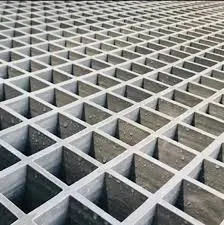
-
 Afrikaans
Afrikaans -
 Albanian
Albanian -
 Amharic
Amharic -
 Arabic
Arabic -
 Armenian
Armenian -
 Azerbaijani
Azerbaijani -
 Basque
Basque -
 Belarusian
Belarusian -
 Bengali
Bengali -
 Bosnian
Bosnian -
 Bulgarian
Bulgarian -
 Catalan
Catalan -
 Cebuano
Cebuano -
 China
China -
 China (Taiwan)
China (Taiwan) -
 Corsican
Corsican -
 Croatian
Croatian -
 Czech
Czech -
 Danish
Danish -
 Dutch
Dutch -
 English
English -
 Esperanto
Esperanto -
 Estonian
Estonian -
 Finnish
Finnish -
 French
French -
 Frisian
Frisian -
 Galician
Galician -
 Georgian
Georgian -
 German
German -
 Greek
Greek -
 Gujarati
Gujarati -
 Haitian Creole
Haitian Creole -
 hausa
hausa -
 hawaiian
hawaiian -
 Hebrew
Hebrew -
 Hindi
Hindi -
 Miao
Miao -
 Hungarian
Hungarian -
 Icelandic
Icelandic -
 igbo
igbo -
 Indonesian
Indonesian -
 irish
irish -
 Italian
Italian -
 Japanese
Japanese -
 Javanese
Javanese -
 Kannada
Kannada -
 kazakh
kazakh -
 Khmer
Khmer -
 Rwandese
Rwandese -
 Korean
Korean -
 Kurdish
Kurdish -
 Kyrgyz
Kyrgyz -
 Lao
Lao -
 Latin
Latin -
 Latvian
Latvian -
 Lithuanian
Lithuanian -
 Luxembourgish
Luxembourgish -
 Macedonian
Macedonian -
 Malgashi
Malgashi -
 Malay
Malay -
 Malayalam
Malayalam -
 Maltese
Maltese -
 Maori
Maori -
 Marathi
Marathi -
 Mongolian
Mongolian -
 Myanmar
Myanmar -
 Nepali
Nepali -
 Norwegian
Norwegian -
 Norwegian
Norwegian -
 Occitan
Occitan -
 Pashto
Pashto -
 Persian
Persian -
 Polish
Polish -
 Portuguese
Portuguese -
 Punjabi
Punjabi -
 Romanian
Romanian -
 Russian
Russian -
 Samoan
Samoan -
 Scottish Gaelic
Scottish Gaelic -
 Serbian
Serbian -
 Sesotho
Sesotho -
 Shona
Shona -
 Sindhi
Sindhi -
 Sinhala
Sinhala -
 Slovak
Slovak -
 Slovenian
Slovenian -
 Somali
Somali -
 Spanish
Spanish -
 Sundanese
Sundanese -
 Swahili
Swahili -
 Swedish
Swedish -
 Tagalog
Tagalog -
 Tajik
Tajik -
 Tamil
Tamil -
 Tatar
Tatar -
 Telugu
Telugu -
 Thai
Thai -
 Turkish
Turkish -
 Turkmen
Turkmen -
 Ukrainian
Ukrainian -
 Urdu
Urdu -
 Uighur
Uighur -
 Uzbek
Uzbek -
 Vietnamese
Vietnamese -
 Welsh
Welsh -
 Bantu
Bantu -
 Yiddish
Yiddish -
 Yoruba
Yoruba -
 Zulu
Zulu
frp launder
Understanding FRP Launder Systems Innovations in Water Treatment
In the realm of water treatment and management, the need for efficiency and adaptability has never been greater. Industries worldwide are grappling with the dual challenges of meeting stringent environmental regulations and ensuring sustainable resource management. Amid these challenges, Fiber Reinforced Plastic (FRP) launder systems have emerged as a cutting-edge solution, marrying durability with functionality in water treatment processes.
What is FRP?
Before delving into the specifics of FRP launder systems, it's essential to understand what FRP is. Fiber Reinforced Plastic (FRP) is a composite material made from a polymer matrix reinforced with fibers, typically glass, carbon, or aramid. This material is prized for its exceptional strength-to-weight ratio, corrosion resistance, and versatility. In water treatment applications, these properties make FRP an ideal choice for constructing launder systems that are often subjected to harsh chemicals and varying environmental conditions.
The Role of Launder Systems in Water Treatment
Launders are integral components of wastewater treatment plants and other water processing facilities. They are designed for collecting and transferring water, typically from sedimentation tanks or clarifiers, into subsequent treatment stages. The design of a launder system can significantly influence the efficiency of water treatment processes, impacting factors such as flow distribution, sedimentation, and clarity of effluent.
FRP launder systems, in particular, are becoming increasingly popular due to their lightweight construction, which facilitates easier installation and maintenance over traditional materials such as concrete or steel. Additionally, their smooth surfaces minimize turbulence and reduce the potential for particle re-suspension, which is crucial for achieving high-quality effluent.
Advantages of FRP Launder Systems
1. Corrosion Resistance One of the standout benefits of FRP is its inherent resistance to corrosion. Unlike metal systems that can deteriorate over time when exposed to aggressive chemicals, FRP maintains its integrity, ensuring a longer service life and reduced replacement costs.
2. Lightweight and Easy Installation FRP's lightweight nature makes transportation and installation more straightforward compared to traditional materials. This characteristic not only saves on labor costs but also allows for the rapid deployment of treatment facilities, especially in remote areas or sites with challenging access.
frp launder

3. Customizability FRP launder systems can be customized to meet specific operational needs. They can be designed in various shapes, sizes, and configurations, allowing engineers to tailor solutions that fit unique treatment processes.
4. Thermal Stability FRP materials can withstand a wide range of temperatures, making them suitable for both hot and cold water applications. This thermal stability ensures that the launder systems function effectively under diverse environmental conditions without risk of damage.
5. Sustainability With a growing emphasis on sustainable practices in water treatment, FRP systems contribute positively by reducing energy and resource consumption. Their long lifespan and recyclability further enhance their role in sustainable engineering practices.
Applications of FRP Launder Systems
FRP launder systems have gained traction in various sectors, including municipal wastewater treatment, industrial water processing, and even in specialized applications such as aquaculture. Whether it's for collecting treated effluent or facilitating complex chemical processes, FRP launders play a critical role in enhancing operational efficiency while adhering to environmental standards.
Challenges and Considerations
Despite the myriad benefits of FRP launder systems, there are challenges to consider. The initial cost of FRP materials can be higher than conventional options, although this can often be offset by long-term savings in maintenance and replacement. Furthermore, proper installation and handling are crucial to maximizing the lifespan and performance of these systems. Engineers and operators must be trained on best practices to ensure optimal operation.
Conclusion
As industries continue to navigate the complexities of water treatment in an environmentally conscious world, FRP launder systems stand out as a viable solution that aligns with modern needs. Their durability, adaptability, and efficiency make them a preferred choice for a range of applications, promising a more sustainable future for water management practices. By embracing innovations like FRP launders, industries can enhance their operational effectiveness and contribute positively to the preservation of water resources.









